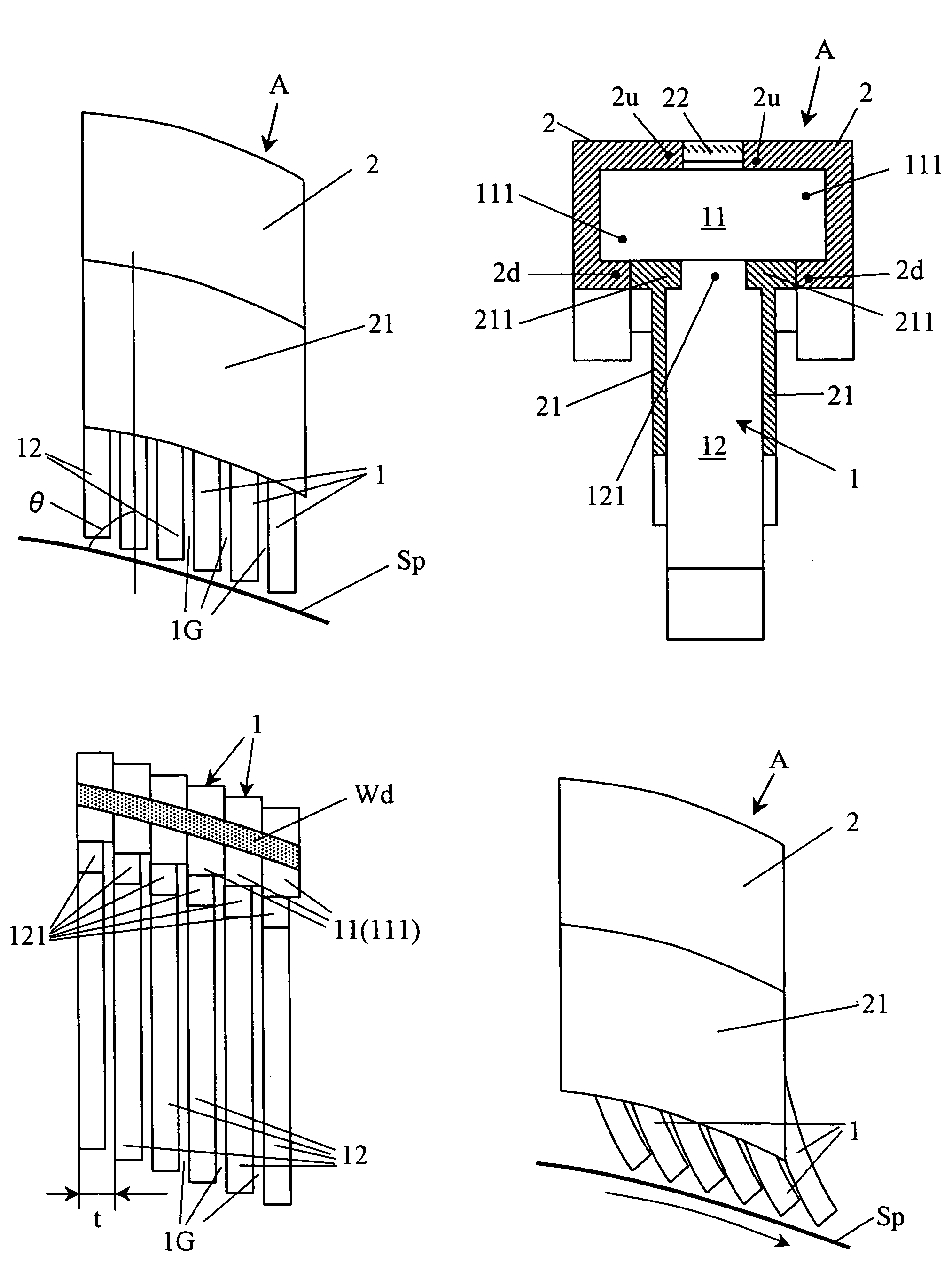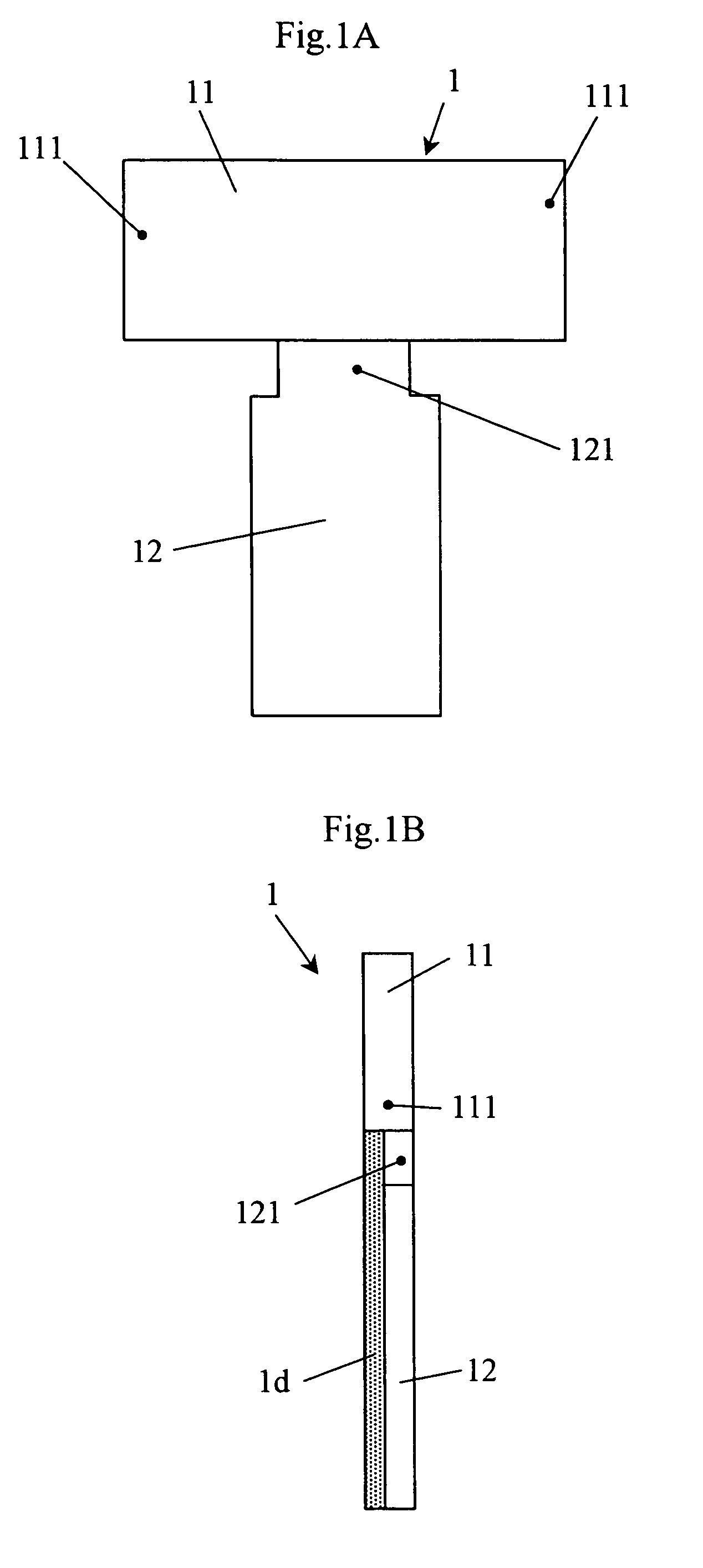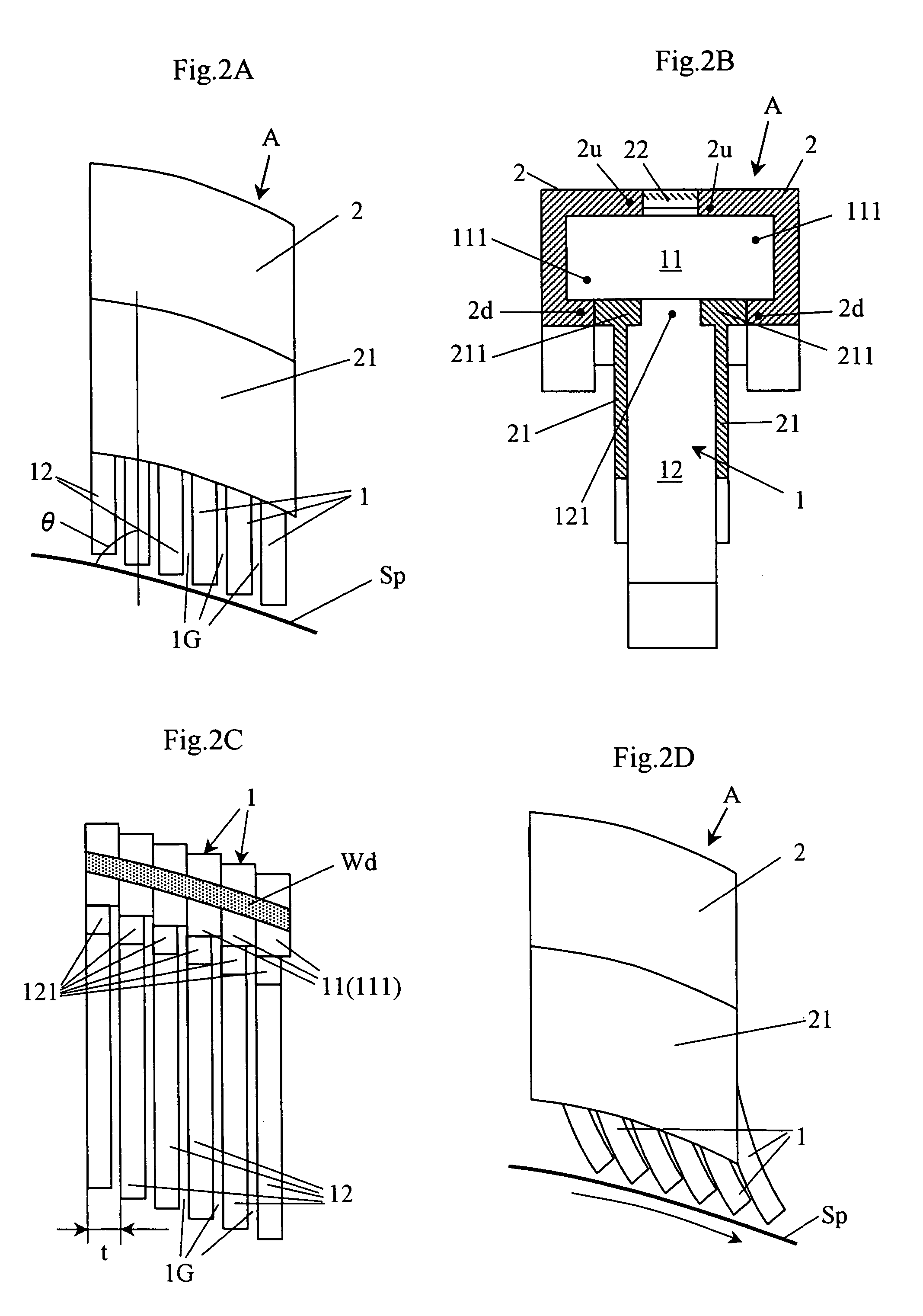Method of manufacturing axis seals having reduced gas leakage properties and a rotary machine using axis seals
a technology of axis seals and rotary machines, which is applied in the direction of manufacturing tools, machines/engines, liquid fuel engines, etc., can solve the problems of non-uniform distribution of residual stress (strain), bending or warping, and achieve the effect of small amoun
- Summary
- Abstract
- Description
- Claims
- Application Information
AI Technical Summary
Benefits of technology
Problems solved by technology
Method used
Image
Examples
first embodiment
a Manufacturing Method in Accordance With the Present Invention
[0077]FIG. 6 shows a flow chart of a manufacturing process of an axis seal in accordance with an embodiment of the present invention.
[0078]A leaf seal A manufactured by a manufacturing process shown in FIG. 6 is an axis seal which seals low temperature fluid, and although not limited to this leaf seal, a leaf seal A is formed of stainless steel.
[0079]First, a metal formed by cold rolling so as to obtain a predetermined thickness has residual stress (strain) accumulated inside thereof. Therefore, in order to eliminate the residual stress (strain), heat treatment (heating at 740° C. for 30 minutes and then cooling) is performed by transmitting a roll of rolled metal material M1 little by little. (See FIG. 5A). (Step S11)
[0080]Subsequently, a roll of rolled metal material M1 is cut out into a predetermined size. (Step S12) From the cut-out metal material plate M2, thin metal plates 1 are manufactured by etching the outline ...
second embodiment
a Manufacturing Method in Accordance With the Present Invention
[0082]FIG. 7 shows a flow chart of a manufacturing process of an axis seal in accordance with an embodiment of the present invention.
[0083]A roll of rolled metal material M1 is cut out into metal material plates M2 of a predetermined size to be suitable for processing. (Step S21) A plurality of the metal material plates M2 that are cut out into a predetermined size in Step S21 are arranged so as to be piled up, when anti-seizure lubricant is applied to spaces between the metal material plates M2. (Step S22) Thereafter, the metal material plates M2 laminated in Step S22 are heated (at 680° C. for four hours), with weighting, whereby residual stress (strain) is eliminated from the metal material plates M2. (See FIG. 5B). (Step S23)
[0084]Subsequently, the thin metal plates 1 are manufactured by having the portions of the metal material plates M2 which correspond to the outline portions 10 of the thin metal plates 1 etched f...
third embodiment
a Manufacturing Method in Accordance With the Present Invention
[0087]FIG. 8 shows a flow chart of a manufacturing process of an axis seal in accordance with an embodiment of the present invention.
[0088]A roll of rolled metal material M1 is cut out into metal material plates M2 of a predetermined size to be suitable for processing. (Step S31) Thin metal plates 1 are manufactured by having the portions of the metal material plates M2 cut out in Step S31 that correspond to the outline portions 10 of the thin metal plates 1 etched from both sides and by having the portions corresponding to the tips 12 etched from one side. (Step S32) The thin metal plates 1 formed in Step S32 are laminated so as to be oriented in a predetermined direction. (Step S33) The thin metal plates 1 piled up in Step S33 are heated (at 680° C. for four hours), weighting, thereby eliminating residual stress (strain) from the thin metal plates. (See FIG. 5C). (Step S34)
[0089]Thereafter, the thin metal plates are la...
PUM
| Property | Measurement | Unit |
|---|---|---|
| thickness | aaaaa | aaaaa |
| temperature | aaaaa | aaaaa |
| temperature | aaaaa | aaaaa |
Abstract
Description
Claims
Application Information
 Login to View More
Login to View More - R&D
- Intellectual Property
- Life Sciences
- Materials
- Tech Scout
- Unparalleled Data Quality
- Higher Quality Content
- 60% Fewer Hallucinations
Browse by: Latest US Patents, China's latest patents, Technical Efficacy Thesaurus, Application Domain, Technology Topic, Popular Technical Reports.
© 2025 PatSnap. All rights reserved.Legal|Privacy policy|Modern Slavery Act Transparency Statement|Sitemap|About US| Contact US: help@patsnap.com



